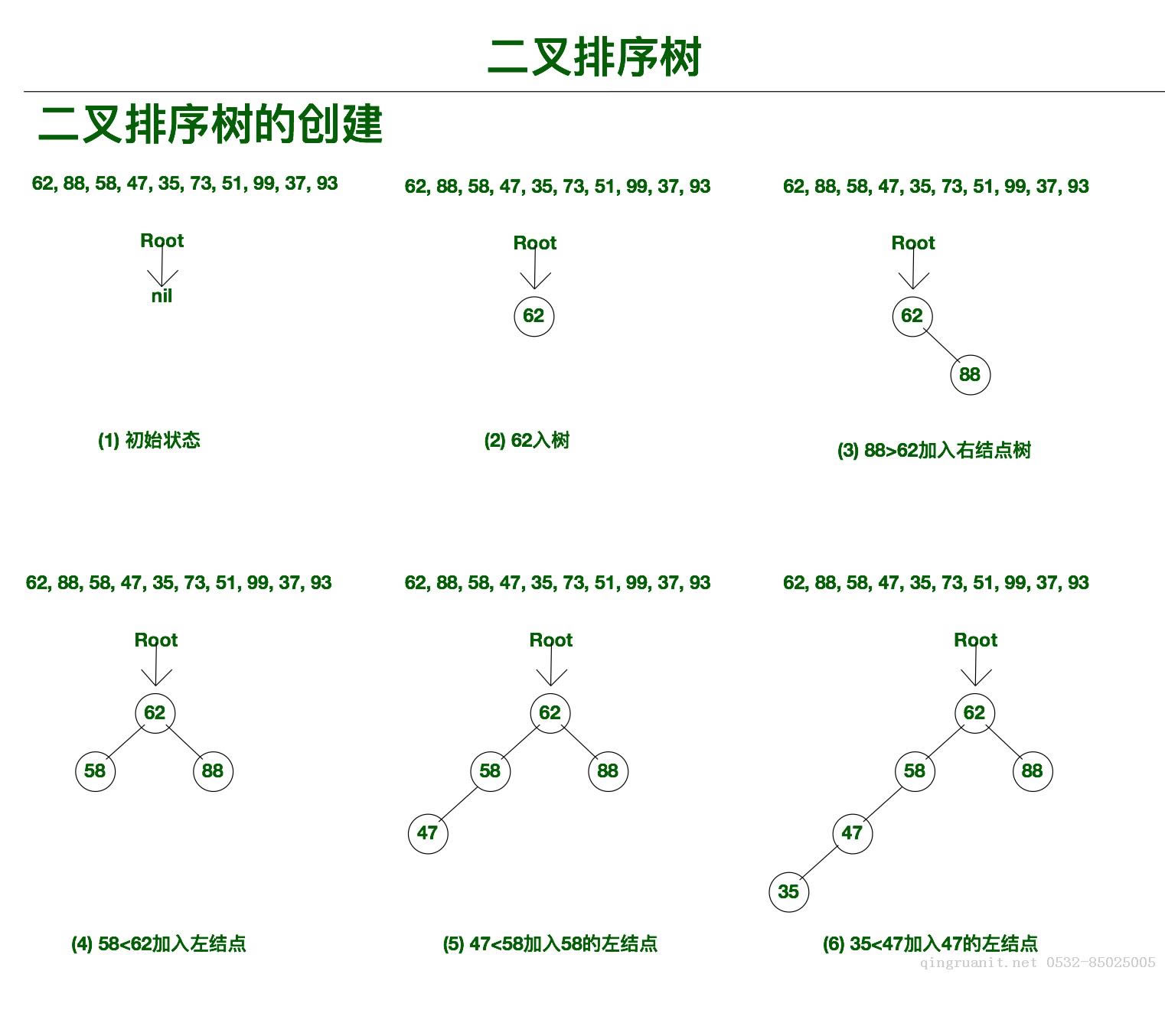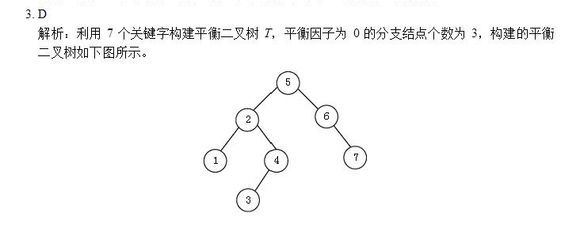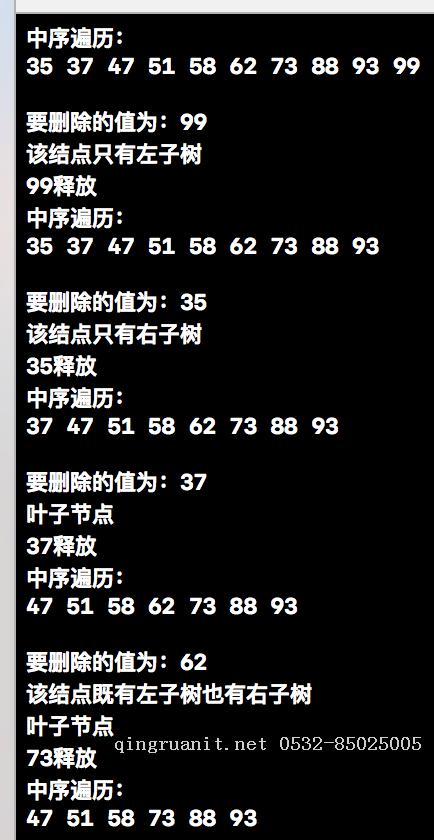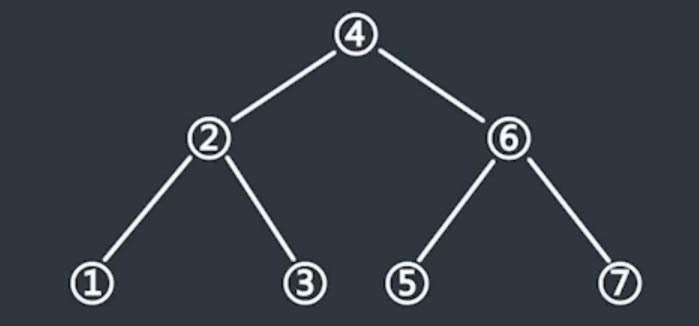| 根据运行的环境,操作系统可以分为桌面操作系统,手机操作系统,服务器操作系统,嵌入式操作系统等。 
二进制排序树对于插入和查询数据非常方便. 还有一个平衡的二叉树. 平衡二叉树也是一类二叉排序树,但是在二进制排序数最坏的情况下查询时间复杂度为O(n),而平衡二叉树可以保证每个查询为O(logn),但是由于平衡二叉树的内部特性二叉排序树+数据结构,该实现的特性,在插入,删除或修改它上花费的时间无法忽略,因此我只是对它有所了解二叉排序树+数据结构,并且没有实际的代码. 您可以参考相关博客:

此可能更广.

#include<cstdio>
#include<iostream>
#include<cstring>
#include<algorithm>
using namespace std;
struct BinaryTree
{
int data;
BinaryTree *parent,*left,*right;
BinaryTree()
{
data=-1;
parent=left=right=NULL;
}
};
BinaryTree *root=new BinaryTree;
bool insert(BinaryTree *R,int x);
bool search(BinaryTree *R,int x);
void InOrderTra(BinaryTree *R);
bool dele(BinaryTree *R,int x);
void clear(BinaryTree *R);
int getheight(BinaryTree *R);
int size(BinaryTree *R);
bool empty();
int main()
{
int n;
if(insert(root,1)) cout<<"Successfully Insert Value 1\n";
if(dele(root,1)) cout<<"Successfully Delete Value 1\n";
while(cin>>n)
{
insert(root,n);
}
if(search(root,6)) cout<<"Found!"<<endl;
cout<<"Depth: "<<getheight(root)<<endl;
cout<<"Size: "<<size(root)<<endl;
InOrderTra(root);cout<<endl;
dele(root,10); //10 12 13 5 7 6 4
InOrderTra(root);cout<<endl;
insert(root,6);
dele(root,7);
InOrderTra(root);cout<<endl;
insert(root,7);InOrderTra(root);cout<<endl;
dele(root,5);
InOrderTra(root);cout<<endl;
if(empty()) cout<<"Empty\n";
else cout<<"Not Yet\n";
clear(root);
if(empty()) cout<<"Empty\n";
else cout<<"Not Yet\n";/**/
return 0;
}
bool insert(BinaryTree *R,int x)
{
if(R->data==-1)
{
R->data=x;
return 1;
}
else if(R->data==x) //this value has already been inserted
return 0;
else
{
BinaryTree *node;//10 12 13 5 7 6 4
if(x<R->data)
{
if(R->left==NULL)
{
R->left=new BinaryTree;
node=R->left;
node->parent=R;
}
else node=R->left;
}
else if(x>R->data)
{
if(R->right==NULL)
{
R->right=new BinaryTree;
node=R->right;
node->parent=R;
}
else node=R->right;
}
insert(node,x);
}
}
bool search(BinaryTree *R,int x)
{
if(R==NULL) return 0;
else if(x==R->data) return 1;
else if(x<R->data)
search(R->left,x);
else search(R->right,x);
}
void InOrderTra(BinaryTree *R) //found sth accidently -- if you traverse a binarytree in order, all the numbers will be printed out in increasing order
{
if(R==NULL) return;
InOrderTra(R->left);
cout<<R->data<<endl;
InOrderTra(R->right);
}
bool dele(BinaryTree *R,int x)
{
if(R==NULL) return 0; //if this value is not in this tree, return false
if(x<R->data) dele(R->left,x);
else if(x>R->data) dele(R->right,x);
else
{
if(R->left==NULL&&R->right==NULL) //if this value is on the leaf
{
if(R==root) //if this value is also on the root
R->data=-1; //just reset root's value
else
{
BinaryTree *Pra=R->parent; //or must alter its parent's left/right child to NULL
if(Pra->left==R) Pra->left=NULL;
else Pra->right=NULL;
delete R; //only then can you delete R, otherwise there may be a TLE
}
}
else
{
BinaryTree *node;
if(R->left==NULL||R->right==NULL) //if this node has only one child
{
node=(R->left==NULL)? R->right: R->left; //use its left/right child's value to cover its original value
R->data=node->data;
R->left=R->right=NULL; //remember to alter them to NULL
}
else //if this node has 2 children (complicated situation...)
{
node=R->right; //need to find out the least value on its right subsidiary tree
while(node->left!=NULL)
node=node->left;
R->data=node->data; //use this value to cover the original
BinaryTree *r=node->right; //attention! this node may also have a right subsidiary tree!
if(node->parent!=R) //if this node's parent is not T
node->parent->left=r; //alter its parent's left child to r
else R->right=r; //else alter R's right child to r
}
delete node;
}
}
return 1;
}
void destroy()
{
root=NULL;
}
void clear(BinaryTree *R)
{
if(R==NULL) return;
clear(R->left);
clear(R->right);
delete R;
if(R==root)
destroy();
}
bool empty()
{
if(root!=NULL)
if(root->data!=-1)
return 0;
return 1;
}
int getheight(BinaryTree *R)
{
if(R==NULL)
return 0;
return max(getheight(R->left),getheight(R->right))+1; //the max depth of left subsidiary tree or right subsidiary tree plus 1 will be the answer
}
int size(BinaryTree *R)
{
if(R==NULL)
return 0;
return size(R->left)+size(R->right)+1; //the number of nodes of left subsidiary tree plus the number of nodes of the right plus 1 will be the answer
}

新生狗即将上四年级,笔记将以英语进行描述. 我希望写作效果不好.

当前,没有学习C ++的模板. 稍后,我将在需要时学习它,并且代码将更改为模板.
本文来自本站,转载请注明本文网址:
http://www.pc-fly.com/a/jisuanjixue/article-286103-1.html
|

